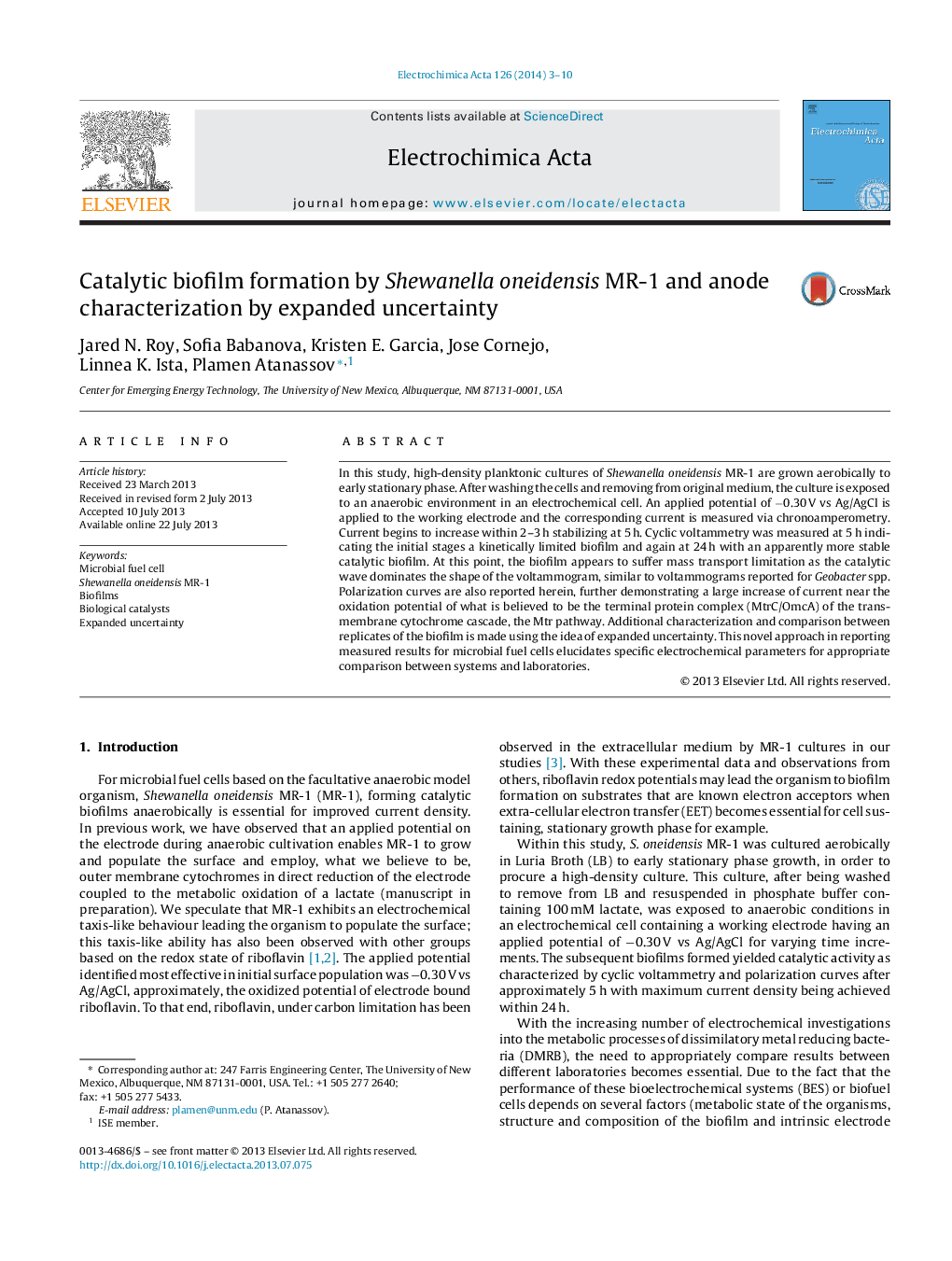| Article ID | Journal | Published Year | Pages | File Type |
|---|---|---|---|---|
| 186364 | Electrochimica Acta | 2014 | 8 Pages |
•Thick and active biofilm of Shewanella oneidensis MR-1 was developed.•The catalytic activity of the formed biofilm is comparable with Geobacter spp.•A methodology is defined to produce a standard means of reporting data.•Three regions within the polarization curve with lower uncertainty were found.
In this study, high-density planktonic cultures of Shewanella oneidensis MR-1 are grown aerobically to early stationary phase. After washing the cells and removing from original medium, the culture is exposed to an anaerobic environment in an electrochemical cell. An applied potential of −0.30 V vs Ag/AgCl is applied to the working electrode and the corresponding current is measured via chronoamperometry. Current begins to increase within 2–3 h stabilizing at 5 h. Cyclic voltammetry was measured at 5 h indicating the initial stages a kinetically limited biofilm and again at 24 h with an apparently more stable catalytic biofilm. At this point, the biofilm appears to suffer mass transport limitation as the catalytic wave dominates the shape of the voltammogram, similar to voltammograms reported for Geobacter spp. Polarization curves are also reported herein, further demonstrating a large increase of current near the oxidation potential of what is believed to be the terminal protein complex (MtrC/OmcA) of the trans-membrane cytochrome cascade, the Mtr pathway. Additional characterization and comparison between replicates of the biofilm is made using the idea of expanded uncertainty. This novel approach in reporting measured results for microbial fuel cells elucidates specific electrochemical parameters for appropriate comparison between systems and laboratories.
